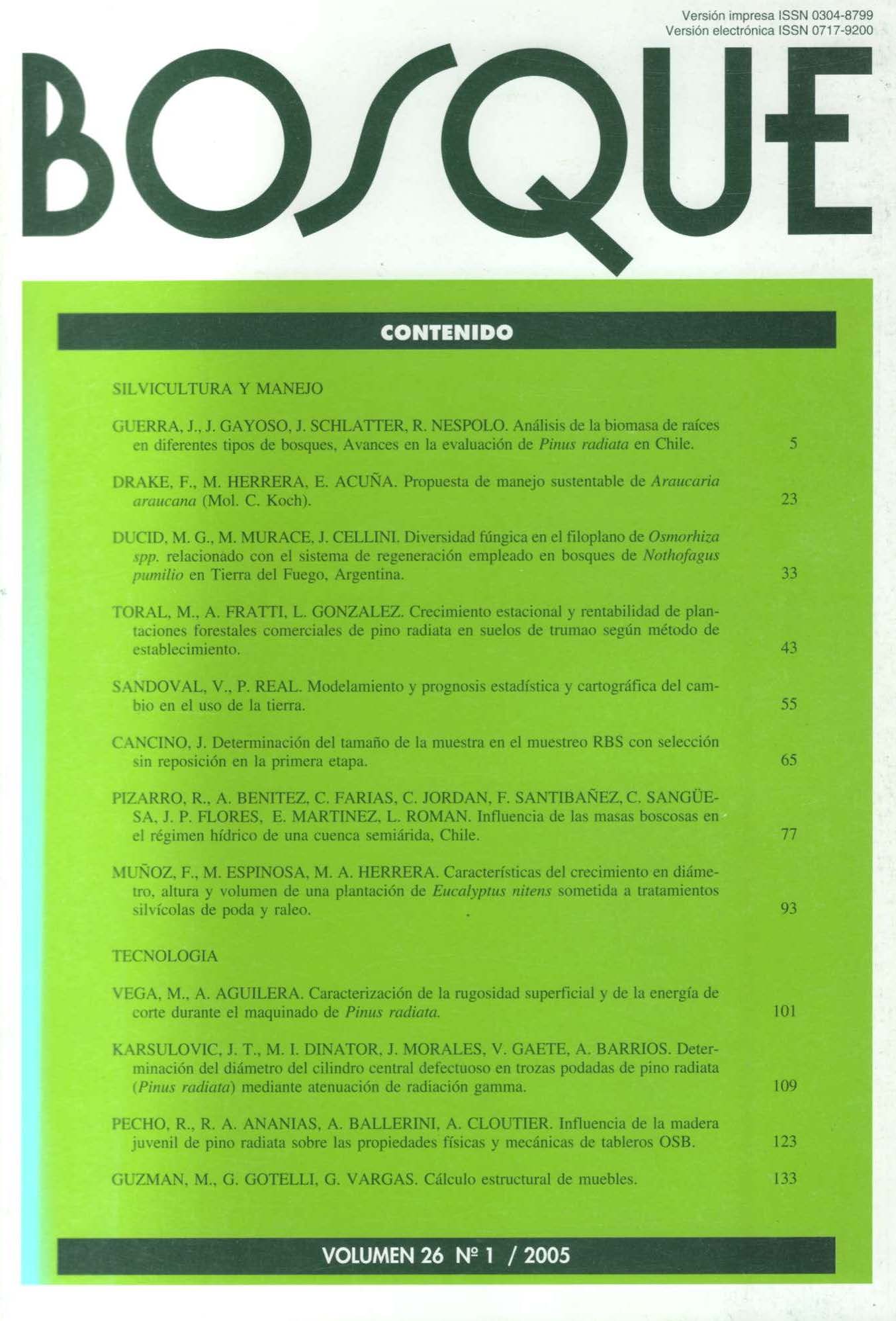Main Article Content
Apr 29, 2005
Abstract
Randomized Branch Sampling (RBS) is useful for the estimation of foliar or root biomass, amount of fruit, and other tree parameters. RBS uses the natural branching pattern within the crown of the tree to configure the sample. Its use requires the definition of nodes (those points where a branch or its part divides in two), segments (those parts of a branch between two consecutive nodes), and paths (those series of successive segments between the basal and a terminal segment, i.e., a segment without a node at its final end). Currently, three variants of the RBS exist. One corresponds to the traditional RBS, which applies selection with replacement in all the nodes; the other two variants apply selection without replacement in the first or the second node defined in the tree. The formula for the estimation of variance of the estimator in the traditional RBS is simple; thus, it is easy to obtain the formula to determine the sample size (number of paths) required to obtain a specific sampling error. Conversely, in the variants of the RBS with selection without replacement, the formulas for variance estimation of the estimator are complex and, until now, no formula exists for the determination of sample size. In this article, a graphical approach for the determination of sample size (number of primary segments and number of paths) is developed for RBS sampling with selection without replacement taking place in the first stage.


